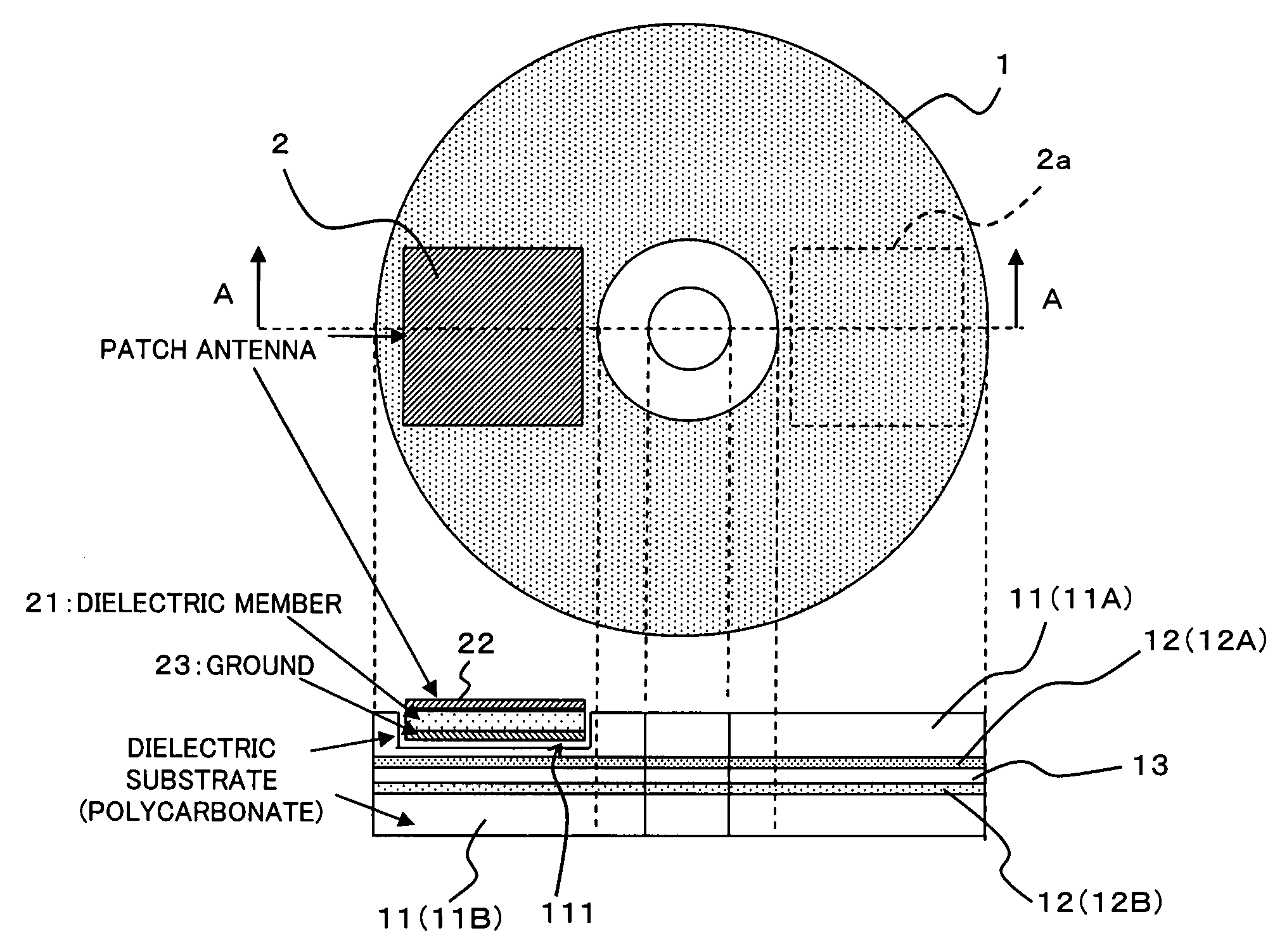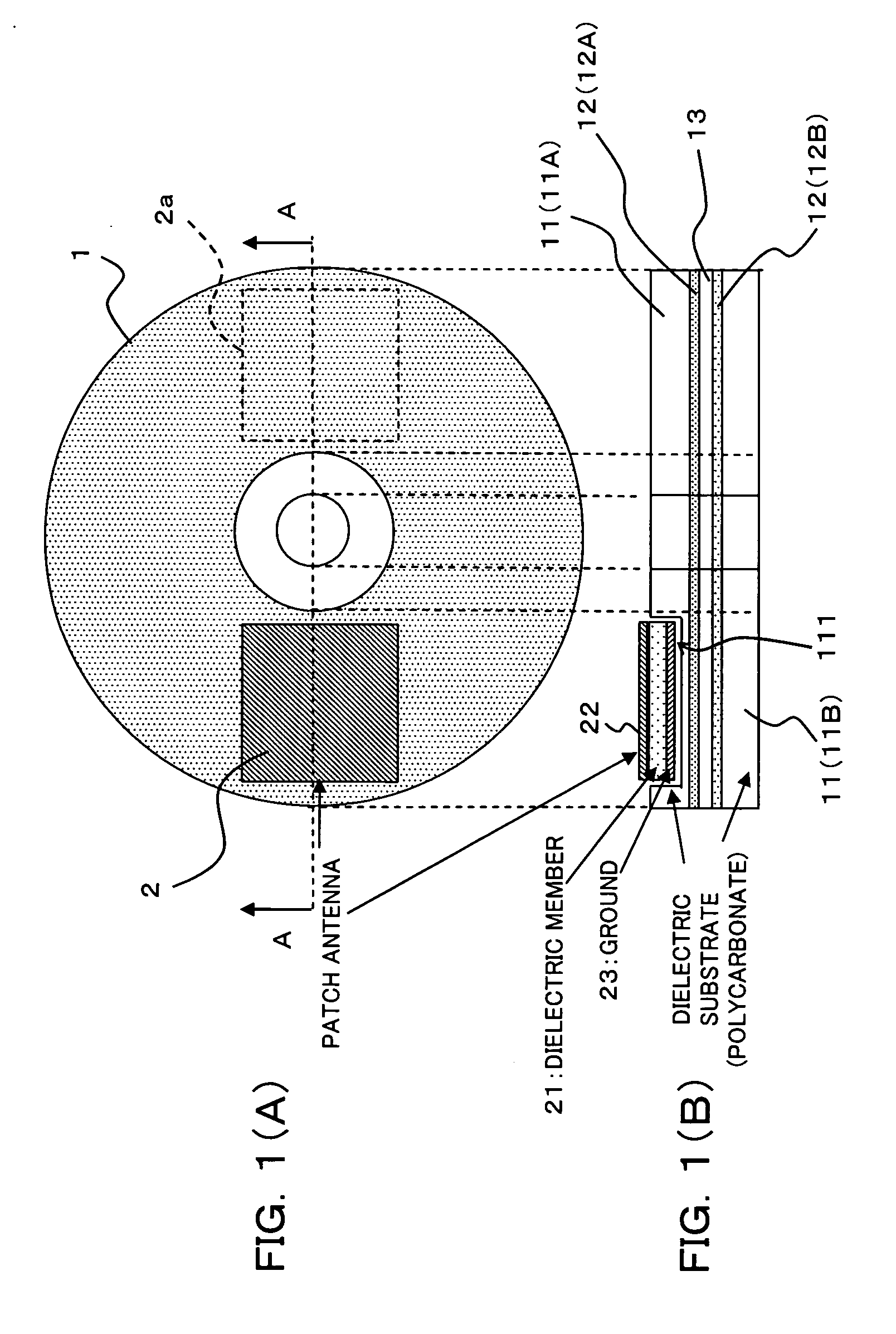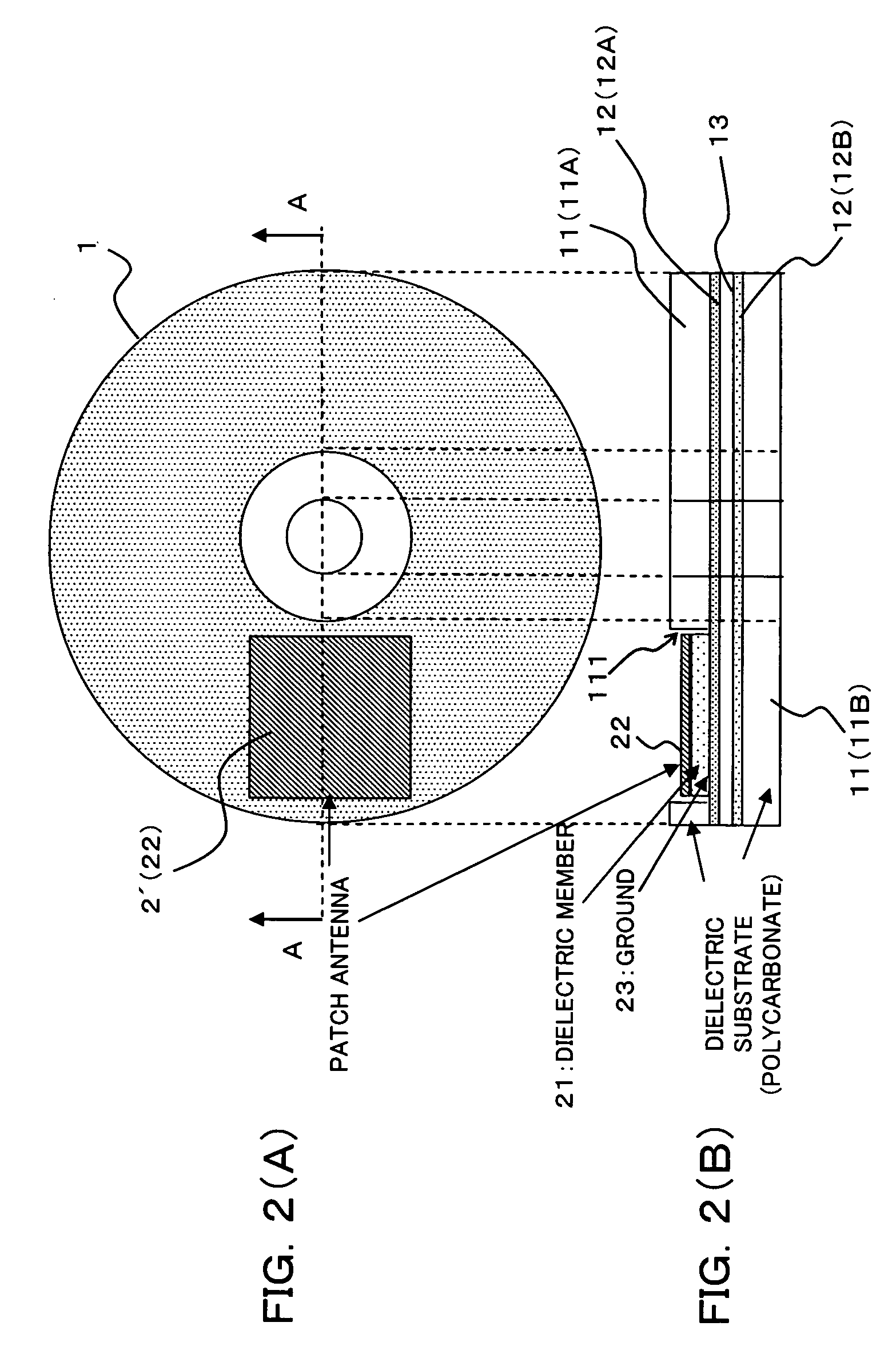Radio tag antenna structure for an optical recording medium and a case for an optical recording medium with a radio tag antenna
- Summary
- Abstract
- Description
- Claims
- Application Information
AI Technical Summary
Benefits of technology
Problems solved by technology
Method used
Image
Examples
first embodiment
(A) Description of First Embodiment
[0063] FIGS. 1(A) and 1(B) are diagrams each showing a radio tag antenna structure for an optical recording medium according to a first embodiment of this invention. FIG. 1(A) is a schematic plan view of a DVD (Digital Versatile Disk) as being an optical recording disk medium, and FIG. 1(B) is a schematic sectional view taken along line A-A of the DVD shown in FIG. 1(A).
[0064] As shown in FIGS. 1(A) and 1(B), the DVD 1 has apparently a similar structure to a CD (Compact Disk). The DVD 1 is generally formed by laminating two disks with an adhesive, each of which has a size according to the standardized specification [for example, an inside diameter of 1.5 cm, an outside diameter of 12 cm (diameter), a thickness of 0.6 mm]. Namely, two disks each of which has a reflective layer (metal layer) 12 (12A, 12B) functioning as a light-reflecting surface formed on one side of a dielectric substrate (dielectric layer) 11 (11A, 11B) are laminated with an adhe...
second embodiment
(B) Description of Second Embodiment
[0098] FIGS. 7(A) and 7(B) are diagrams for illustrating a radio tag antenna structure for an optical recording medium according to a second embodiment of this invention. FIG. 7(A) is a schematic plan view of a CD as being an optical recording disk medium, whereas 7(B) is a schematic sectional view taken along line A-A of the CD shown in FIG. 7(A).
[0099] As shown in FIGS. 7(A) and 7(B), the CD 3 is sized to have an inside diameter of 1.5 cm, an outside diameter (diameter) of 12 cm and a thickness of 0.6 mm. Generally, a reflective layer (metal layer) 12 is formed on one surface of a dielectric substrate (dielectric layer) 11, and a protective layer 14 is further formed thereon, as shown in FIG. 7(B). In FIGS. 7(A) and 7(B), illustration of a recording layer on which information is recorded is omitted.
[0100] In this embodiment, the dielectric substrate 11 also functions as a protective layer for protecting the reflective layer 12 and the recordin...
PUM
 Login to View More
Login to View More Abstract
Description
Claims
Application Information
 Login to View More
Login to View More - R&D
- Intellectual Property
- Life Sciences
- Materials
- Tech Scout
- Unparalleled Data Quality
- Higher Quality Content
- 60% Fewer Hallucinations
Browse by: Latest US Patents, China's latest patents, Technical Efficacy Thesaurus, Application Domain, Technology Topic, Popular Technical Reports.
© 2025 PatSnap. All rights reserved.Legal|Privacy policy|Modern Slavery Act Transparency Statement|Sitemap|About US| Contact US: help@patsnap.com



